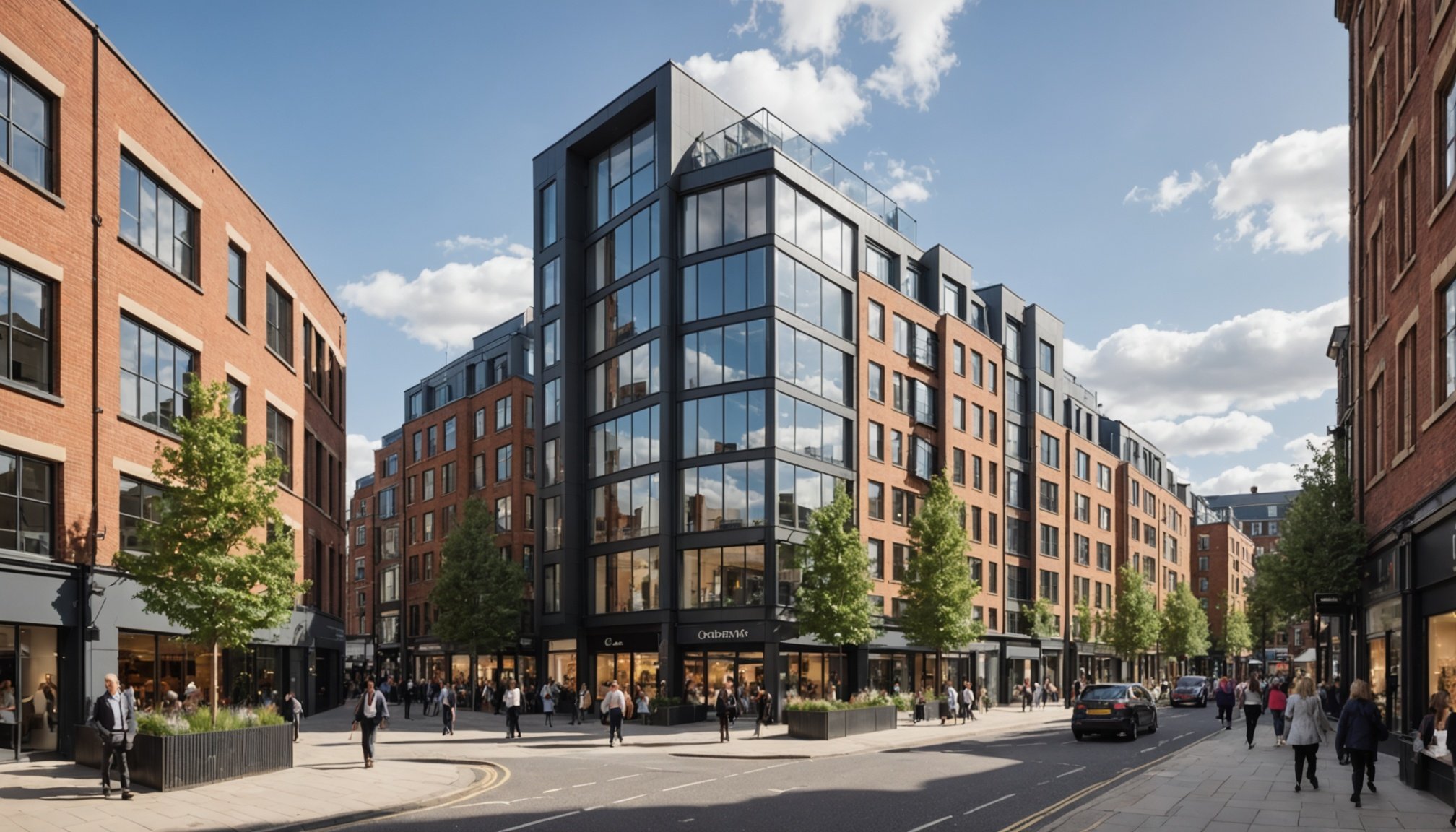Overview of Mixed-Use Developments
Mixed-Use Developments are versatile projects that blend residential, commercial, cultural, and sometimes industrial spaces into a unified plan. They cater to diverse urban demands by offering a mix of properties that support living, working, and leisure activities. This synergy fosters a well-integrated community lifestyle.
In the vast UK Market, the real estate scene remains dynamic, presenting both challenges and opportunities for investors. The landscape is characterized by vibrant cities with varying levels of population density and economic vitality. London, for instance, is a bustling hub offering numerous investment prospects.
Additional reading : Unveiling 2023”s Urban Real Estate Trends: What”s Shaping the UK”s City Property Market?
The importance of mixed-use developments in urban planning cannot be overstated. These developments help reduce urban sprawl by optimizing land use, making cities more sustainable. They boost local economies by encouraging walkability and reducing the need for long commutes, which can alleviate traffic congestion and pollution. As more cities prioritize smart growth, mixed-use developments are increasingly seen as key to fostering thriving and sustainable urban areas.
Mixed-use developments serve as pivotal components in reshaping urban living. They not only redefine the structural landscape but also play critical roles in economic and environmental sustainability.
In the same genre : Essential Considerations for Investing in UK Real Estate for Long-Term Rental Success
Advantages of Investing in Mixed-Use Developments
Investing in mixed-use developments presents significant opportunities for income diversification. By incorporating various uses within a single development, investors can benefit from multiple revenue streams. This setup allows for a combination of residential, retail, and office spaces, enabling investors to tap into different market segments simultaneously. Such diversity can mitigate the risks associated with reliance on a single type of tenant or market condition.
Furthermore, mixed-use projects enhance community engagement. These developments often become central hubs that promote local businesses and social interaction. By creating vibrant spaces, they attract a wide array of visitors, boosting foot traffic and contributing to the local economy. This not only benefits residents and businesses but also fosters a sense of community ownership and pride.
Another advantage of mixed-use developments is their ability to attract diverse tenant demographics. The variety of spaces available within a single development appeals to various tenant profiles, from young professionals to established businesses. This diversity frequently leads to lower vacancy rates, as it offers flexibility and adaptability to market shifts. Consequently, these developments are often seen as more resilient investments in the real estate sector, capable of maintaining occupancy and generating steady returns amidst fluctuating economic conditions.
Challenges of Investing in Mixed-Use Developments
Investing in mixed-use developments presents unique challenges, primarily in navigating intricate regulatory frameworks and zoning laws. Investors must rigorously understand local regulations, which can vary significantly, to ensure compliance and prevent potential legal setbacks. In the UK, zoning laws are particularly stringent, demanding that projects align with specific urban planning goals.
Market volatility is another formidable challenge affecting real estate investments. Economic fluctuations can impact return on investment, making it crucial for investors to remain informed and adaptable to market shifts. Mixed-use developments, while offering diverse revenue streams, can still face financial instability if market trends are not actively monitored.
The management of mixed-use properties is complex, given their integrated nature of residential, commercial, and possibly industrial spaces. Coordinating these distinct sectors requires adept property management skills to address diverse tenant needs and maintain functionality across all sectors. This complexity can lead to increased operational costs and necessitates strategic planning.
Overall, investors should weigh these challenges carefully, considering investment risks, while also appreciating the potential for resilience and adaptability that mixed-use developments can offer in a fluctuating market environment.
Case Studies: Successful Mixed-Use Developments in the UK
Mixed-use developments in the UK have demonstrated remarkable potential in reshaping urban landscapes. Understanding their dynamics involves exploring successful projects and learning from past failures.
Analysis of Notable Projects
Several standout case studies illustrate effective implementations. King’s Cross in London is a prime example, where a mélange of residential, office, retail, and cultural spaces revitalised the area, transforming it into a bustling hub. Its success lies in its innovative design and strategic location, highlighting the significance of accessibility and versatility in development planning.
Lessons Learned from Failure
Not all projects achieve success, offering critical learning opportunities. Certain ventures faltered due to misaligned identities or inability to meet local needs. Reflecting on these failures emphasises the importance of comprehensive market analysis and community alignment.
Comparative Success Metrics
Evaluating mixed-use developments involves specific success metrics. Economic impact, occupancy rates, and community engagement levels serve as key indicators. Connecting these metrics with social and environmental sustainability showcases the multifaceted benefits these projects can offer. By assessing these factors, stakeholders can refine strategies to ensure future success, solidifying mixed-use developments’ pivotal role in urban enhancement.
Expert Opinions on Mixed-Use Development Investment
Gaining insights from real estate professionals can illuminate the nuanced strategies essential for navigating mixed-use developments. Experts emphasise the importance of location and thorough market research in devising effective investment strategies. Identifying high-demand areas ensures that these developments maximise their occupancy rates and economic viability.
Industry analysis reveals that trends such as urbanisation and changing lifestyle preferences are shaping the future of mixed-use developments. These trends highlight a growing emphasis on sustainability and integrated community spaces. Professionals point out that understanding these shifts is crucial for adapting to evolving market needs and maintaining competitive investment portfolios.
Strategic investment in mixed-use developments requires a comprehensive understanding of economic factors and consumer behaviour. Experts recommend prioritising developments that align with urban growth initiatives, as these are likely to yield favourable returns. Additionally, they highlight collaboration with local authorities and stakeholders to ensure developments meet community needs, fostering both financial success and social impact.
Ultimately, expert insights underscore the need for a balanced approach, weighing potential risks against rewards. By doing so, investors can harness mixed-use developments’ growing importance in urban planning and real estate to capitalise on their transformative potential.
Comparison with Other Investment Types
Exploring mixed-use developments in relation to more traditional real estate investments unveils a unique landscape with distinct advantages. When compared to traditional residential or commercial properties, mixed-use developments often boast superior risk mitigation. Their diverse tenant base and integrated offerings provide a buffer against economic volatility, unlike single-use properties which are more vulnerable to specific market downturns.
In terms of investment comparisons, mixed-use projects offer a more robust portfolio by combining diverse property segments. This diversity is key, as it can smooth revenue fluctuations from vacant spaces in one section by relying on occupied spaces in others. Single-use properties lack this adaptability, making them potentially riskier.
Risk assessment plays a crucial role in decision-making. While mixed-use developments present more complex challenges, such as regulatory hurdles, they also promise enhanced resilience. Long-term investment potential in mixed-use spaces is generally perceived as higher due to trends toward urban integration and sustainability. These spaces are increasingly preferred due to their inviting environments and reduced commuting needs.
When considering investment in mixed-use versus other sectors, it’s vital to weigh the potential for sustained returns, adaptability, and the growing demand for versatile living and working spaces.

